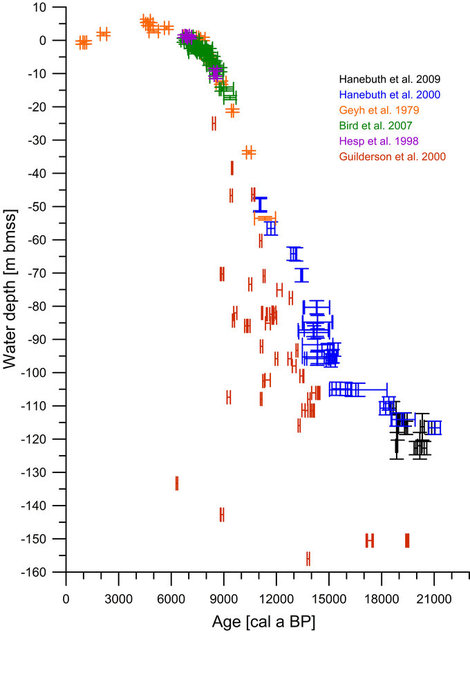Project CCP2
The impact of sea-level variations on shelf-slope systems
T. v. Dobeneck, D. Hebbeln, K. Huhn, T. Mörz, S. Mulitza,
J. Pätzold, T. Schwenk
To assess the effects of deglacial changes in water-mass geometry and ocean circulation on sediment deposits in shelf-slope systems, a modeling system and sedimentary evidence from the Uruguay/southern Brazil continental margin are combined.
Sea-level rise during the last deglaciation is assumed to have exerted strong controls on the sedimentary systems of continental margins. Meltwater pulses contributed to the deglacial sea-level rise, but it is currently not clear how much of the major meltwater pulse (“1A”; Fairbanks et al. 1989, Hanebuth et al. 2000) entered the ocean from the Antarctic rather than the Laurentide ice sheet (Clark et al. 2002). This question is highly relevant for an assessment of the stability of the West Antarctic Ice Sheet. By combining expertise from OC (on ocean-circulation modeling) and SD (on sediment-transport modeling and sea-level driven changes in shelf-slope architecture), we have developed a new approach to quantify past sea-level variations from sedimentological data in combination with modeling. The modeling system includes standard hydrodynamics and sediment-transport driven morphodynamics, nested into a basin-scale model for the northern Argentina/southern Brazil shelf-slope system at kilometer-scale resolution. For the first time, this setup allows us to assess the effect of sea-level fluctuations and climate-driven ocean circulation changes on an entire shelf-slope system.

Key Hypothesis
- Sea-level variations and meltwater pulses leave a unique shelf-sedimentary fingerprint on the shelf-slope system on the Uruguay/South Brazil continental margin.
Specific Methods
- Coupled ocean circulation-sediment transport modeling
- Seismo-acoustic (bathymetric, seismo-stratigraphic) analyses
- Sedimentological analyses (grain size, material composition) of deposits from the outer shelf and upper slope


